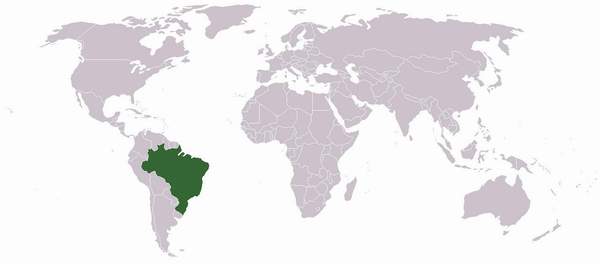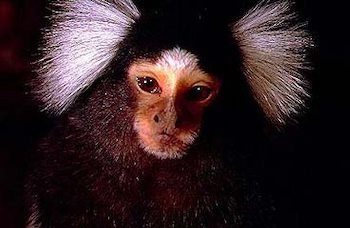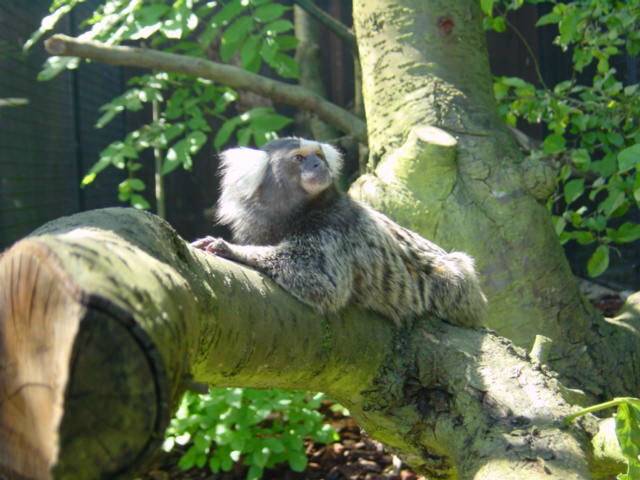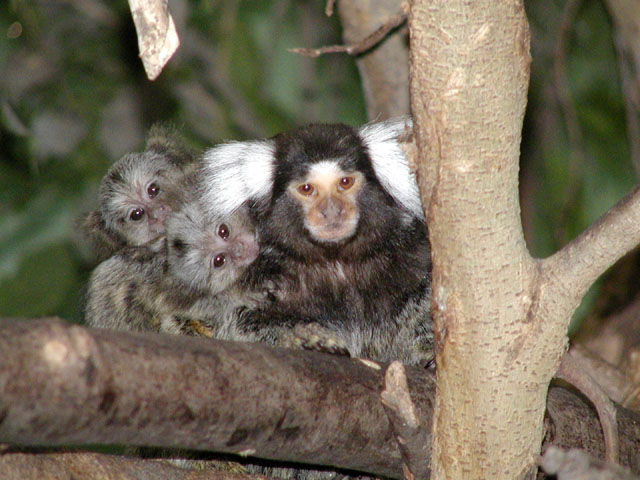|
The little white bundle monkey (Callithrix jacchus) is probably the best known little claw monkey. His original native country was Brazil, in the meantime, it has spread over many areas of South America and Central America. They were caught there once to thousands and were exported to Europe, North America and Asia. In the mouth area of the Amazon, in the area of Buenos Aires and in Central America they have disclosed new living spaces. Little white bundle monkeys are cultural followers who are also to be found in plantations and parks. |
|||||
 |
|||||
|
General Already in the eighteenth century little white bundle monkeys were held with pleasure as pets. To Europe imports, at that time they lent to some distinguished drawing room an exotic mark. In today's Brazil they have against it no particular value. Who has become weary these lively house comrades, she places every now and then simply before the door. For some years the possierlichen little monkeys not only in parks romp about in the middle of Sao Paulo. Beyond the city they have appeared, above all, in the vicinity of country houses. Also near an animal home which it lacked of financial support, discovered Knogge a stately number. Not far from the big cities still remains of the former rain forest are often found. Mostly 1 square kilometre, these relics not even offer the last refuge to many local animal species. In addition, they are the only biotopes in which almost extinct kinds can be settled like the little lion's monkey (Leontopithecus rosalia) again. In seventeen of 22 forest fragments in which this little claw monkey should gain a foothold again little white bundle monkeys have also appeared. Therefore the question positions itself whether they endanger the success of the resettlement. Maybe they tow illnesses to which the little lion's monkeys have not grown, or they make the fruits of the wood disputable to her rare relatives. However, apparently they can also open new food springs: Where little white bundle monkeys have bitten open the bark of a tree to drink the herausrinnenden juice, little lion's monkeys also refresh themselves with pleasure. The fur of the white bundle monkeys is grey. The most standing out sign is the white, bundle-like hair which surrounds the ears. A white spot is found on the forehead, the face is hairless. The long tail is touched greyish white. White bundle monkeys reach a head body length from 14 to 18 centimetres. In her original spreading area the white bundle monkeys are strongly threatened, however, they increase in her new native country in Südostbrasilien substantially. Sometimes they arrange on plantations such damages that they are looked as a plague. White bundle monkeys form polyandrische groups, that is a female pairs off with several little men. These little men remain with the female and also take over a good part of the education. After about 150-day gestation period the female to four (mostly two) introduces young animals to the world. In comparison to the parents the Jung's animals are very big. Newborn twins reach together about 40% of the body weight of the mother and one supposes that the polyandry and the fatherly participation in the breeding shows a result of this unusual child size. Like all claw monkeys white bundle monkeys are day-active. They inhabit a row of habitats, from the edge of the forest till the deep woods and also seem on plantations. With quick movements they run through the branches and can also jump well. Claw monkeys live together in groups of from four to 15 animals who often exist of parents and their descendants. These groups inhabit areas up to a size of 30 hectares. Nevertheless, within the group there rules a strict rank order, the dominance of the leading animals is maintained by aggressive behaviour. Weight app. 400 g Puberty Little men at the age of about 1 year, female with from about 20 to 24 months Age In the wild about 10 years, in human care up to 16 years
Little white bundle monkeys as a domestic animal:
Little white bundle monkeys are to primates and need daily employment. They should hold the animals not alone, always at least in twos or with other animals. In our case it lives together very harmoniously with 2 Sugar Glidern. Check to yourselves with the help of the following questions whether little white bundle monkey really the suitable domestic animals for you are:
COUNT TO THE MOST POPULAR FRUIT KINDS
|
|||||


